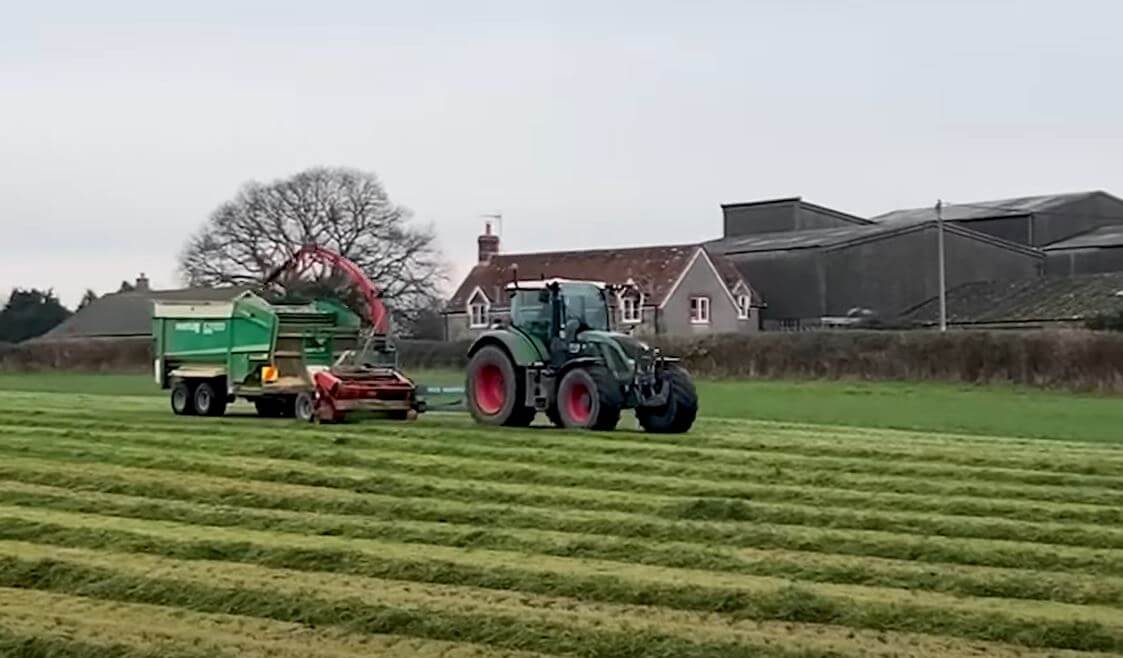Extending the grazing season with zero-grazing systems
Zero-grazing, also known as “cut-and-carry” or “green-chop,” refers to the mechanical harvesting and feeding of fresh grass, which is becoming increasingly popular in grass-based milk production systems alongside conventional grazing.
This practice enables farmers to supply fresh grass from land parcels outside of the main grazing block during seasonal shortages and periods when climatic conditions limit animal grazing opportunities. Zero-grazing is mostly used alongside conventional grazing, especially on fragmented farms with multiple separated land blocks, to help farmers overcome fragmentation and increase grass use, extending grass feeding in spring and autumn.
While zero-grazing systems have been criticized on animal welfare grounds, it’s important to note that the term “zero” can be misleading. In fact, many farmers use zero-grazing alongside traditional grazing methods to provide their animals with extended access to fresh grass, rather than to replace outdoor grazing entirely. This approach helps to supplement grazing during seasonal shortages or when climatic conditions limit outdoor grazing opportunities.
In Europe, farms are often divided into multiple land blocks due to the “Old Continent” ‘s agricultural history, with some blocks located several miles apart. As a result, farmers use the most distant fields for cutting hay and silage, as well as to mow fresh grass for their animals.
However, one of the key challenges identified is the additional cost and time input associated with zero-grazing. A farmer in the United Kingdom overcame this challenge by utilizing a Hustler EzFeed silage wagon for his zero-grazing system.
Robin Blatchford, a fifth-generation farmer in Wiltshire, England, comes from a long line of producers who have been cultivating the land for over 300 years. After switching from arable and beef farming, he now focuses on dairy farming with an autumn calving system. Robin’s 200-head milking herd exclusively feeds on grass and grass silage, no maize/corn is produced on the farm nor fed to cattle.
Robin’s farm has faced a huge impact due to the last summer drought and the desperate need for silage. “This year, we ended up doing some zero-grazing with the Hustler EzFeed silage wagon and it’s been absolutely brilliant for it,” he said. To address the problem, Robin decided to order a Hustler EzFeed SM130 silage wagon that could be used for typical clamp silage feeding, but also for zero-grazing by adapting a mower at the front.

With the capability of handling 4 tons of fresh grass a day and 6 tons of grass silage, the EzFeed was the perfect machine for the farm’s needs. It is an economical choice for farmers who rely solely on silage. The wagon has “a conveyor chain in the front and it does have a bit of a tumble effect in there, but you could not class it as a mixer wagon,”Robin explained.The wagon has no mixing action, which makes it low maintenance.
The wide side floor at the front made of chains allows right-hand and left-hand discharge as standard, which is particularly convenient in indoor feeding situations. The wagon is designed to eliminate the trouble of link chains and conveyor belts that require constant adjustment, fine-tuning, and are often slipping or breaking, disrupting the feeding program. EzFeed is the first wagon on the market to run a 100% roller-chain design, which makes it easier to operate.
Moreover, the Hustler EzFeed was also the perfect machine for going out in the field instead of driving only on a concrete pad. EzFeed has the toughest axle design on the market by a country mile and large suspension travel. “I like this machine, let’s put it that way. It’s simple,” said Robin.
Zero-grazing offers a range of benefits, including:
1. Extending the grazing season
In some areas, heavy ground and high rainfall limit the grazing season to just 4-5 months. By reducing the poaching risk and cutting and carting fresh grass to cows earlier and later while they are still in the barn, zero grazing can extend the grazing season by up to three months.
2. Maximizing land usage
Zero grazing enables farmers to utilize all of their land, including parcels that were previously difficult to graze due to distance or terrain. This approach also allows farmers to block off certain pastures at different times of the year for reseeding or planting, providing greater flexibility in grassland management.
3. Increasing stock carrying capacity
Effective grassland management can result in improved grass yields, which can then be used to carry more stock. By reducing the grazing platform and improving the grassland, farmers can make more land available for followers.
4. Growing more home-grown feed
With less land needed for grazing, farmers can use their land to grow other crops or more grass to be harvested for hay, silage, and other uses. This provides a buffer against market fluctuations and offers more flexibility in feed management. Some farmers even grow barley for use as bedding, which can help build organic matter and clean up weeds prior to grass reseeding.
With effective grassland management and the right equipment, farmers can make the most of their land and provide their animals with the nutrition they need to produce high-quality milk.



























